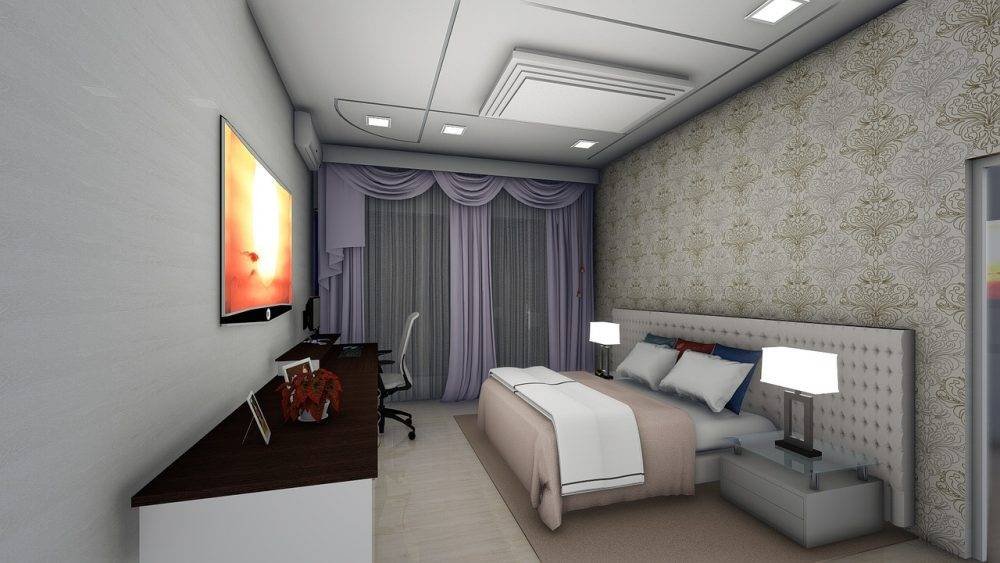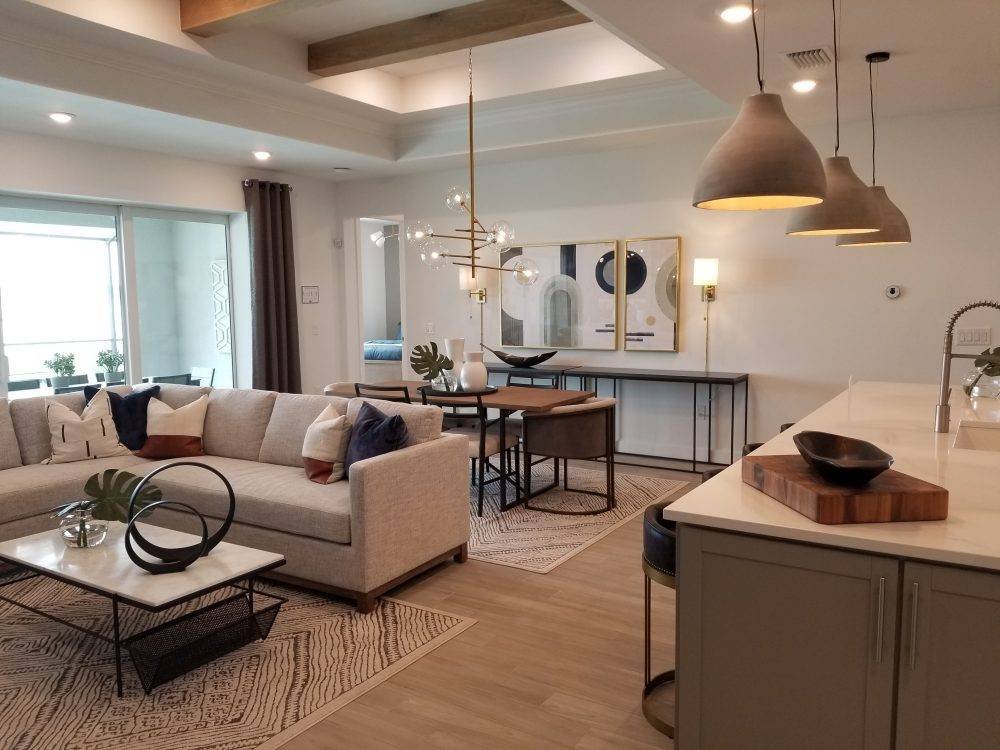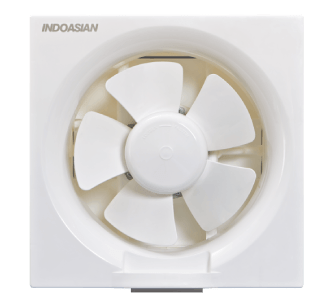Lighting always complements one another. Other interior design elements affect lamps and lighting efficacy, including color schemes, room size and layout, headspace accessibility, fabric selections, and furniture selection. All design incorporates the illusion to some degree. Reflected light, or, to put it another way, lights used for interior decorating, give the appearance of space by reflecting on surfaces and brightening the area in question and its components.
We are not nocturnal creatures, not even humans. However, those extra grey cells that allow you to play with those interesting and thrilling night vision goggles and strategically and stylishly illuminate your home lighting have more than made up for the absence of the tapetum lucidum.
Since it may enhance or detract from the aesthetics of your space, lighting is essential to interior décor. It is important to consider lighting kinds and intensity because they might irritate the eyes and cause lighting fatigue.
Different Types Of Lamps and Lightings
No matter the type of home you live in there are always many choices when it comes to lighting and lamps. Below mentioned are some of the most common types of lighting you can get for your home.
Ambient And General Illumination
To evenly illuminate any given room, ambient and general lighting work best when combined. Utilized preferably in the space where we carry out our regular tasks. These types of lighting are ideal for living spaces where we spend time together. The easiest way to grasp both sorts is to listen to an expert who says it best: “General lighting is precisely what it sounds like: useful illumination for day and night usage. Most of the time, ambient lighting is connected to a dimming system, so the light levels may be adjusted based on the situation. Generally speaking, ambient lighting is employed for entertainment since it adds drama.
Working Lighting
Task lighting offers the required illumination for carrying out certain tasks, such as studying, working at a desk, cooking, or baking. The ideal task lights can help you get better visibility while reducing magnification and preventing eye strains. The spotlight on your kitchen counter or closet and the table-led lamp on the study table is some of the best examples of task lights.
Added Illumination
Accent lighting is typically utilized to direct light toward a certain space or item to draw attention to the things you want people to notice. One can easily make a dramatic point with more emphasis on picture frames, artworks, plants, entryways, and textured walls; it makes dramatic points. Proper installation of these lights can help create a cozy and warm atmosphere.
Ambient Lighting
Mood lighting enhances your favorite spot and makes the area welcoming. Mood lighting may elevate your mood by lowering stress and increasing motivation after a long day. You can even play some good music while installing lighting fixtures that change colors, fairy lights, or LED strips.
Illumination For Each Room Of Your Home
Different spaces in your homes need different types of lighting that complement the overall aesthetics and ambiance of the space. So here are some of the types of lighting you need in different areas of your home.
Living Room Lighting
In addition to overhead lighting, your living room needs spotlights to draw attention to any artwork, furniture, or other décor pieces you may have. When you have visitors around, you may use ambient lighting, but task lights will do if you’re reading by yourself in the living room. Your lighting fixtures, including pendant lamps and chandeliers, should be appropriate to the size of the space in terms of both size and brightness.
Bedroom Lighting

Your bedroom should have a blend of ambient, accent, and task lighting to make the most of your lights in accordance with your mood. If there was no lamp present and you wanted to perform some light reading, the room would be fully illuminated by ambient light (overhead lighting), but you would strain your eyes. The lamp’s height shouldn’t exceed the height of the nightstand. Use accent lighting in the bedroom to better illuminate particular areas and works of art. These may be used as nightlights and are also referred to as spotlights.
Kitchen Lighting
Similar to your bedroom, your kitchen needs both ambient and job lighting. Having too many ambient lights won’t be helpful when conducting certain chores in the kitchen. The spotlight should be placed over a kitchen island, so there are no shadows from the overhead lighting. For the kitchen countertop, homeowners may also add under-cabinet lights. Many kitchen chimneys also include pre-installed lights.
Restroom Lighting
Your bathroom needs various lighting, including ceiling lights for general illumination and accent lights for particular tasks. Again, shadows may be created by an overhead light. So for greater illumination, get a longer, horizontal fixture.
Outdoor Lighting
Outdoor lighting has a variety of uses, including security, safety (on walkways), and pure aesthetics (playing up a beautiful plant or tree). For long-lasting landscape lighting, use high-quality fixtures as they are worth the expense given the severity of the outdoor climate, especially along the shore. This will ensure your lighting fixtures last for years without having to replace them after every few years.
People frequently believe that more is better and that brightness is better, but outside, when you produce a really bright area, you’ve also created a super dark region, which might be harmful. It is preferable to have dim illumination everywhere.
Dining Areas
The table is the main focus of dining room lighting, and lamps positioned immediately over the table may give ambient and task lighting space. Dimmers are especially appealing since they provide you freedom when creating a cozy setting for entertaining. It’s crucial to light anything beyond the doors to ensure that individuals utilizing the dining room at night have a focus point other than their reflection in the glass doors.
Office Lighting
The first stage in creating a lighting plan for a home office is determining where certain tasks will be performed; reading books or papers, working at the computer, and using the phone are popular duties. Knowing the computer’s location is crucial since it can be restricted by where the outlets and internet cables are located. This is because it is important to avoid having a light fixture reflect on the computer screen. A task light for the desk area should be placed to the right or left of the occupant’s primary work orientation to reduce shadows and reflections.
Hallways, Stairs, And Entrances
Unless there are focal areas like the artwork or architectural features that should get accent lighting, the entrances and corridors of a home normally only need ambient lights. A ceiling-mounted, wall scone, a recessed fixture, or both may provide adequate lighting for a modest doorway. Consider getting chandeliers equipped with lighting controls at the bottom and top of the steps for a double-height entry with a staircase.
Conclusion
Essential lamps for your room are those that create a pleasant and comfortable lighting environment. This can be achieved by matching the type of light bulb to the purpose and surroundings of the lamp, as well as choosing a lampshade to flatter the space or contrast to its surroundings.
Research the type of lamps and lights available for your home. Then, consider what you’re looking to get out of them based on your needs and your financial means. Consider how they might work with the design you already have in mind, and then make a list. A great way to start is by taking inventory of lighting in rooms that you find particularly attractive and warm. Then, try to figure out what it is about these spaces that makes them so appealing.


